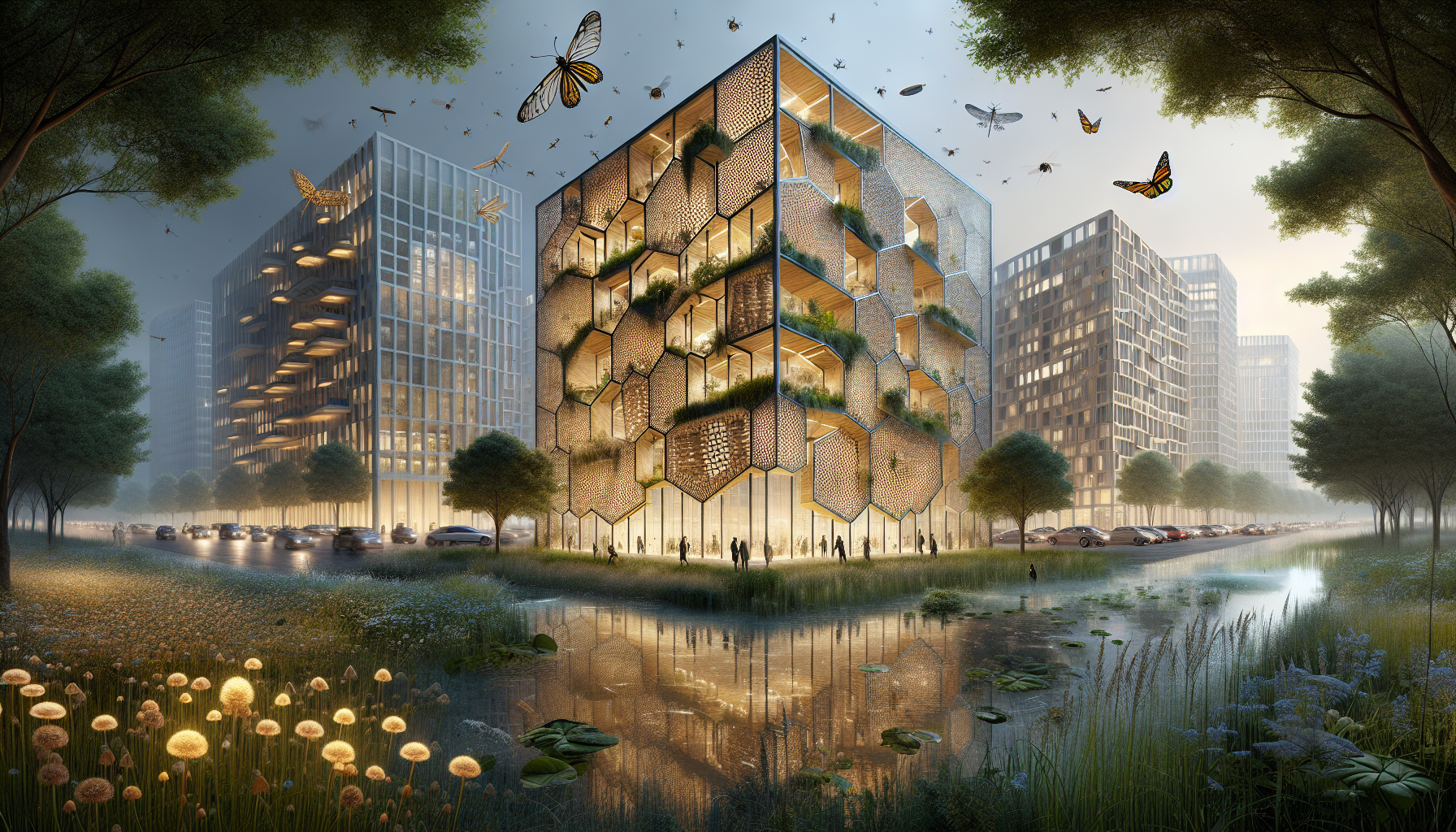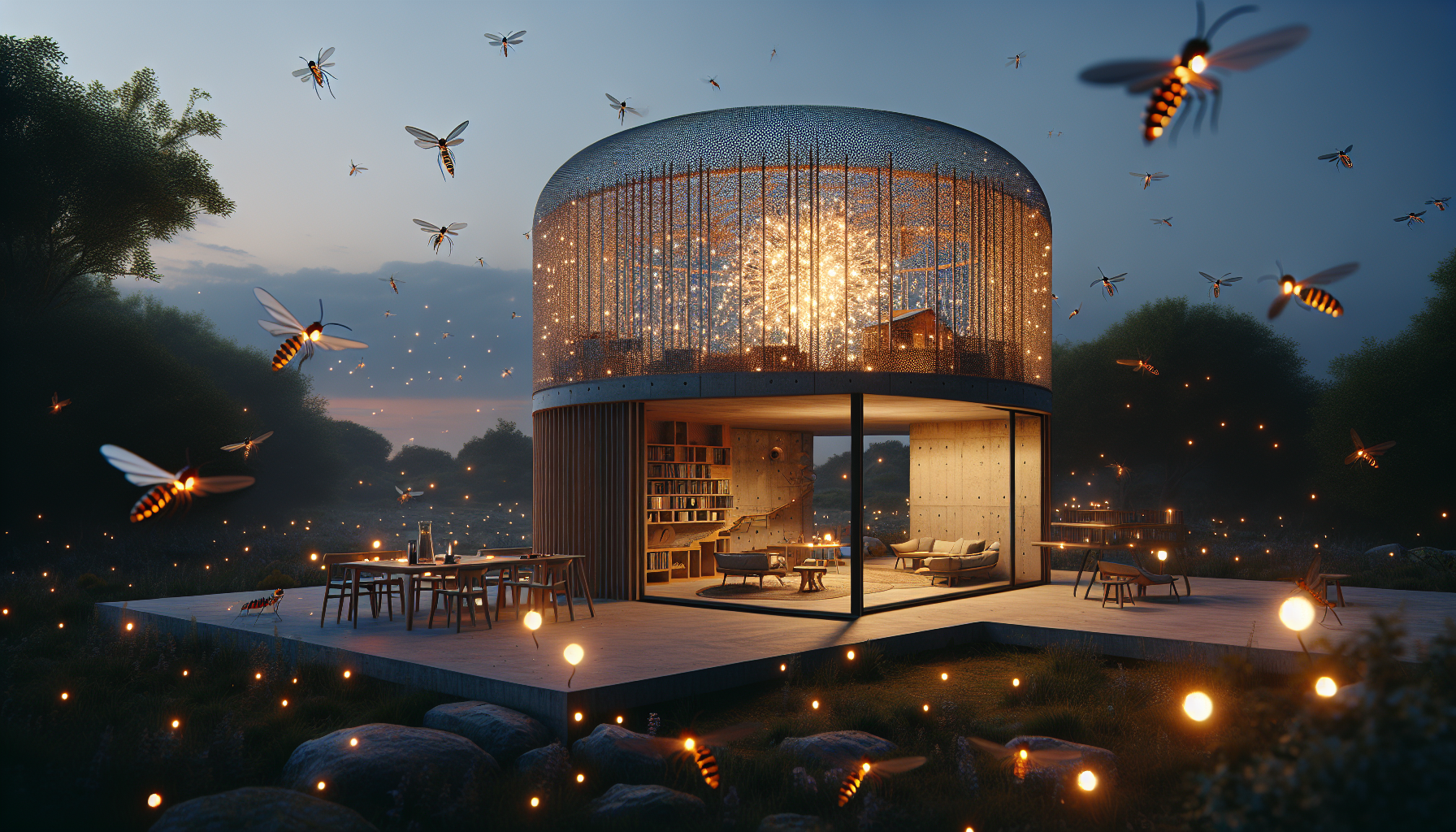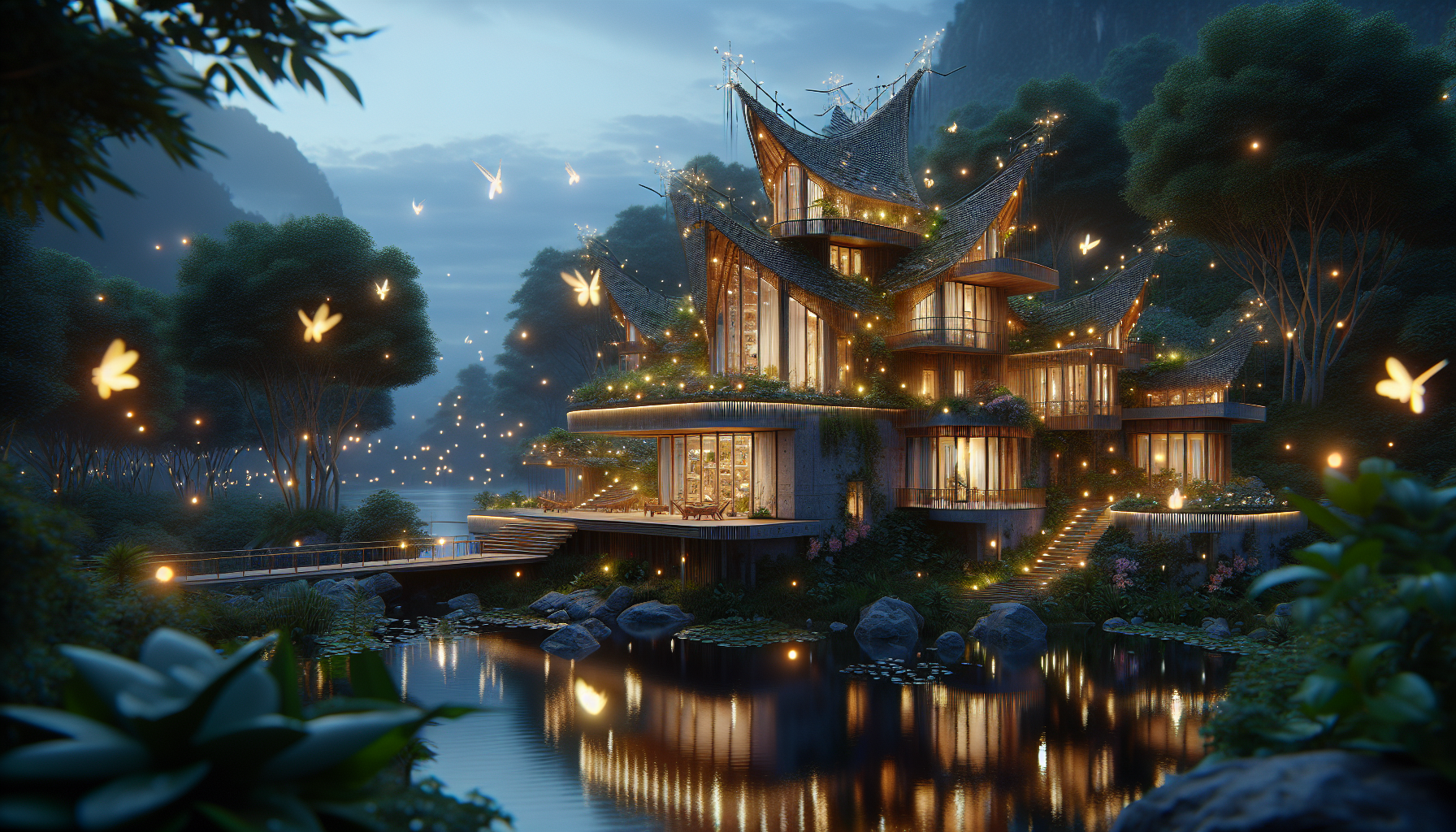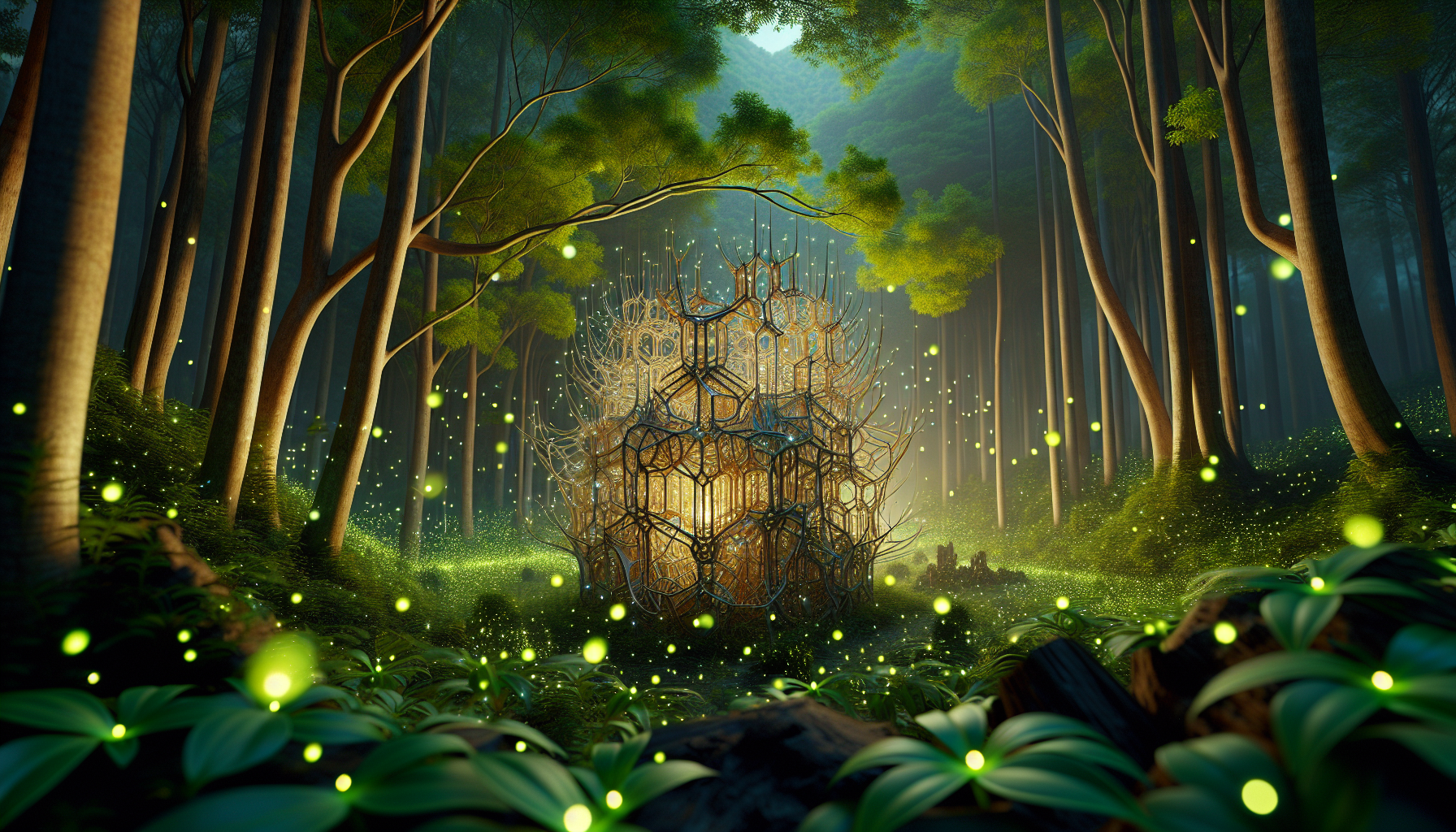In the ever-evolving world of architecture and design, there exists a fascinating intersection between nature and human creativity that is just beginning to illuminate our collective imagination: the art of designing microstructures to attract specific insects for aesthetic appeal. Imagine a garden that comes alive at twilight, not just with the rustle of leaves and the fragrance of flowers, but with the gentle, mesmerizing glow of fireflies, carefully invited to dance among the foliage by the very design of the space itself. This is the enchanting potential of firefly architecture, a concept that merges ecological mindfulness with artistic vision to create living, breathing canvases that captivate the senses and celebrate the intricate beauty of nature’s tiny architects.
The allure of fireflies is undeniable; their bioluminescent glow has fascinated humans for centuries, sparking curiosity and inspiring countless stories, myths, and scientific inquiries. Yet, as urbanization encroaches upon natural habitats, these enchanting creatures are becoming an increasingly rare sight in our backyards and public spaces. Enter the innovative approach of firefly architecture, which seeks not only to restore these luminescent wonders to our environment but to do so in a way that enhances the aesthetic and emotional impact of our outdoor spaces. By understanding the specific environmental and structural needs of fireflies, architects and designers are crafting micro-habitats that beckon these insects, transforming ordinary gardens into magical, living art installations.
This article will delve into the principles and practices of firefly architecture, exploring how these microstructures are meticulously designed to attract fireflies and other specific insects. We will discuss the scientific underpinnings of firefly attraction, including the importance of light, moisture, and vegetation, and how these elements can be strategically integrated into design plans. Additionally, we’ll explore the broader implications of insect-friendly design, considering how these practices contribute to biodiversity, support ecosystem health, and foster a deeper connection between humans and the natural world.
Throughout this exploration, we will highlight inspiring case studies and speak with leading experts in the fields of entomology, landscape architecture, and sustainable design. Their insights will provide a deeper understanding of the technical and creative processes involved in crafting these luminous landscapes. As we journey through the world of firefly architecture, prepare to be captivated by a design philosophy that not only respects and enhances natural beauty but actively participates in its creation. This is a tale of art and science, of innovation and tradition, and ultimately, of the profound beauty that arises when we invite nature to co-author the spaces we inhabit.
Understanding Firefly Architecture: An Intersection of Nature and Design
Firefly architecture is a fascinating intersection of biology, art, and design, where the natural allure of insects meets the structured creativity of human-made environments. This innovative approach involves crafting microstructures to attract specific insects, such as fireflies, to enhance the aesthetic appeal of spaces. By understanding the behaviors and preferences of these insects, architects and designers can create environments that are not only visually captivating but also ecologically harmonious. The objective is to utilize design elements that entice fireflies, thereby transforming ordinary spaces into extraordinary spectacles of nature.
To delve into the intricacies of firefly architecture, it’s crucial to comprehend the fundamental behaviors and needs of fireflies. Fireflies are nocturnal insects that use bioluminescence for communication, particularly during mating rituals. They are attracted to environments that provide suitable lighting, humidity, and vegetation. These insects prefer habitats with abundant plant life and access to water, as these elements support the food sources they rely on, such as snails, worms, and other small insects. By mimicking these natural conditions in architectural designs, one can successfully attract fireflies to specific areas.
Architects can incorporate various elements into their designs to create a welcoming habitat for fireflies. For instance, using materials that reflect light subtly can mimic the glow of fireflies, enticing them to explore the area. Additionally, integrating water features, such as small ponds or fountains, can provide the necessary humidity and attract prey for the fireflies. Planting native vegetation that supports the fireflies’ lifecycle is also essential. These elements work together to create an inviting microenvironment that not only attracts fireflies but also enhances the aesthetic and ecological value of the space.
Designing Microstructures: Key Elements to Consider
When designing microstructures to attract fireflies, there are several critical elements to consider. One of the primary considerations is the type of lighting used in the design. Fireflies communicate through light signals, so the presence of artificial lighting must be carefully managed to avoid disrupting their natural behaviors. Utilizing dim, warm-colored lights can create an inviting atmosphere for fireflies while allowing humans to appreciate their natural glow. Strategically placing lights in the landscape can enhance the visual appeal and attract fireflies to specific areas, creating a harmonious blend of natural and artificial illumination.
Another essential component is the incorporation of water features within the design. Water sources not only provide the necessary humidity that fireflies thrive on but also support the presence of prey species, making the area more attractive to fireflies. Small ponds, fountains, or even bird baths can be effective additions to a firefly-friendly landscape. These water features should be designed to blend seamlessly with the surrounding environment, enhancing the overall aesthetic while serving a functional purpose. By integrating these elements thoughtfully, designers can create a visually stunning space that supports local wildlife and promotes biodiversity.
The choice of vegetation is equally important when designing for firefly attraction. Native plants that are well-suited to the local climate and soil conditions provide essential food and shelter for fireflies and their prey. These plants can be arranged in patterns that mimic natural landscapes, creating a habitat that feels familiar and inviting to fireflies. Incorporating a diverse range of plant species can also enhance the ecological value of the space, supporting a wider variety of insects and animals. This holistic approach to design not only attracts fireflies but also contributes to the overall health and resilience of the local ecosystem.
Comparative Table: Elements of Firefly Architecture
| Element | Purpose | Design Tips |
|---|---|---|
| Lighting | Enhance visibility and mimic natural glow | Use dim, warm-colored lights strategically placed |
| Water Features | Provide humidity and attract prey | Integrate small ponds or fountains seamlessly |
| Vegetation | Support food and shelter needs | Use native plants in natural patterns |
For a more in-depth understanding, watch the video “Firefly Magic: Creating Environments for Nature’s Light Show” on the Nature Design Channel.
The Aesthetic Appeal of Firefly Architecture
Firefly architecture offers a unique aesthetic appeal that combines the beauty of nature with the creativity of human design. By attracting fireflies to specific areas, designers can create enchanting visual displays that captivate and delight observers. These natural light shows add an element of magic to outdoor spaces, transforming them into living artworks that change with the seasons and the time of day. The interplay of light and shadow, combined with the subtle movements of the fireflies, creates a dynamic and ever-changing environment that is both relaxing and inspiring.
The aesthetic appeal of firefly architecture extends beyond visual beauty to include auditory and tactile elements as well. The gentle sounds of water features, combined with the rustling of leaves and the soft hum of insects, create a multisensory experience that immerses observers in the natural world. This sensory engagement enhances the overall appeal of the space, providing a peaceful retreat from the hustle and bustle of everyday life. By designing spaces that engage all the senses, architects can create environments that are not only visually stunning but also emotionally uplifting.
- Create spaces that celebrate nature’s beauty.
- Design environments that engage all the senses.
- Promote sustainability and biodiversity.
Discover the enchanting world of firefly architecture and its impact on design in the video “Firefly Aesthetics: Blending Nature and Art” on the EcoDesign Network.
The Future of Firefly Architecture: Innovations and Implications
As the field of firefly architecture continues to evolve, new innovations and technologies are shaping its future. Advances in lighting technology, for example, are enabling designers to create more sophisticated and energy-efficient lighting systems that mimic the natural glow of fireflies. These systems can be integrated into urban environments to create stunning light displays that attract fireflies and enhance the aesthetic appeal of cities. By combining cutting-edge technology with an understanding of natural systems, designers can create innovative solutions that enhance the beauty and sustainability of built environments.
Another promising development in firefly architecture is the use of biomimicry to inform design decisions. Biomimicry involves studying natural systems and processes to inspire sustainable and efficient design solutions. By observing how fireflies interact with their environment, designers can develop new materials and structures that replicate these interactions, creating spaces that are both functional and beautiful. This approach not only enhances the aesthetic value of the design but also promotes sustainability by reducing energy consumption and supporting biodiversity.
Furthermore, firefly architecture has significant implications for urban planning and development. By incorporating natural elements into the design of cities and public spaces, planners can create healthier, more livable environments that support both human and ecological well-being. This approach can help mitigate the impacts of urbanization on natural habitats, preserving biodiversity and enhancing the resilience of urban ecosystems. As cities continue to grow, the principles of firefly architecture can guide the development of sustainable and aesthetically pleasing urban environments that benefit both people and the planet.
Explore the future of firefly architecture and its potential impact on urban design in the video “Innovations in Firefly Architecture: Designing for a Sustainable Future” on the Sustainable Design Hub.
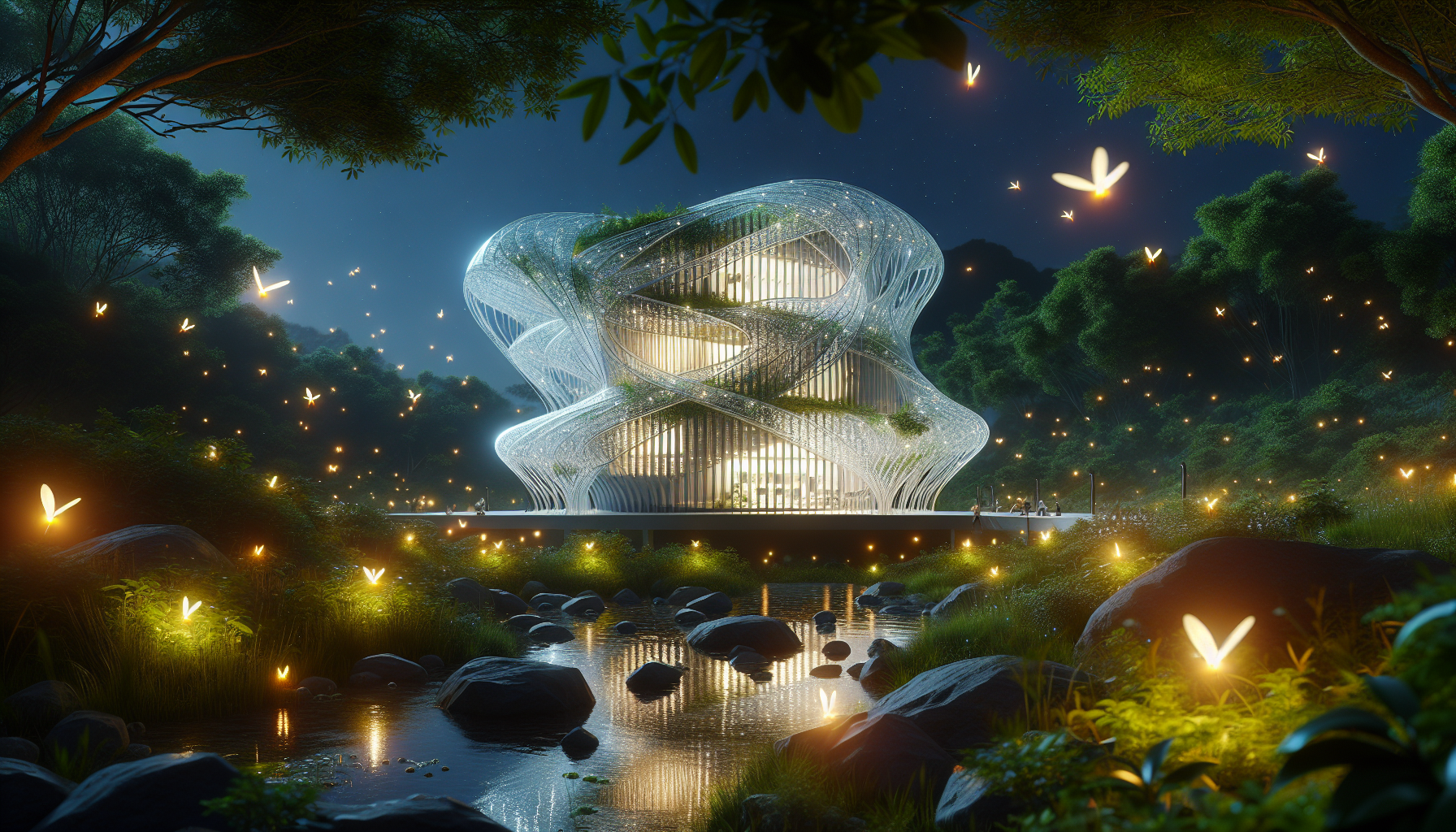
Conclusion
Conclusion
In wrapping up our exploration of Firefly Architecture and the innovative approach of designing microstructures to attract specific insects for aesthetic appeal, we have traversed a unique intersection of nature and human creativity. This concept not only opens a new frontier in architectural design but also prompts us to reconsider our relationship with the environment. Here, we recapitulate the main points discussed, underscore the significance of this theme, and encourage further engagement with the ideas presented.
Firstly, we delved into the foundational concepts of Firefly Architecture, where microstructures are designed to mimic natural habitats that attract specific insects, notably fireflies. This endeavor is not just about aesthetic enhancement but also about fostering biodiversity and ecological balance in urban settings. By creating spaces that invite these luminous insects, architects and designers contribute to environmental sustainability while offering mesmerizing visual experiences.
One of the crucial aspects of this approach is the synergy between scientific research and architectural innovation. The development of these microstructures requires a deep understanding of the behavioral patterns and habitat preferences of fireflies and other insects. This scientific insight is then translated into practical design elements, such as the use of specific materials, shapes, and light patterns that cater to the natural inclinations of these insects.
Additionally, we examined the aesthetic and psychological impacts of integrating insect-attracting structures into urban environments. Such designs not only enhance the visual appeal of spaces but also promote mental well-being by bringing nature closer to people. The presence of fireflies, with their gentle glow, can transform ordinary environments into enchanting spaces, offering a sense of tranquility and wonder.
The ecological implications of Firefly Architecture cannot be overstated. By attracting and supporting insect populations, these designs contribute to local ecosystems, supporting pollination and providing food sources for other wildlife. This reinforces the idea that architecture can play a vital role in environmental conservation and sustainability.
Moreover, we discussed the broader applications and potential of this architectural trend. From urban parks to private gardens, the integration of insect-friendly designs can be tailored to various contexts, offering flexibility and creativity in implementation. This adaptability ensures that the principles of Firefly Architecture can be widely adopted, regardless of geographical or cultural differences.
As we conclude, it is imperative to recognize the transformative potential of Firefly Architecture. This innovative approach not only redefines the aesthetic boundaries of architectural design but also fosters a harmonious coexistence between humans and nature. By embracing this concept, architects, designers, and urban planners can contribute to a more sustainable and visually captivating future.
We encourage you, our readers, to reflect on the insights shared in this article and consider how these ideas might be applied in your own communities. Whether you are an architect, a designer, or simply someone passionate about nature and sustainability, there are numerous ways to engage with and promote Firefly Architecture. Share this article with others who might be interested in exploring the intersection of nature and design. Your involvement and advocacy can inspire further innovations and applications of this concept.
Finally, we invite you to leave your thoughts and comments below. What are your perspectives on integrating nature into urban design? How do you envision the future of sustainable architecture? Your insights and experiences are invaluable in shaping the ongoing dialogue around this exciting field.
For further reading and to stay updated on the latest developments in Firefly Architecture and related topics, we recommend visiting reputable sources such as ArchDaily and National Geographic. These platforms offer a wealth of information on sustainable design and the fascinating interplay between architecture and nature.
In conclusion, Firefly Architecture represents a promising step forward in the quest to create spaces that are not only functional and beautiful but also ecologically responsible. As we continue to innovate and integrate nature into our built environments, we move closer to a future where architecture serves as a bridge between humanity and the natural world. Let us embrace this journey with curiosity and creativity, paving the way for a brighter and more sustainable tomorrow.
Toni Santos is a visionary artisan and conceptual designer who channels the beauty of living organisms into structural expression. At Zureste, Toni explores the intricate elegance of insect anatomy, organic flow, and bioinspired design to create art that feels both natural and otherworldly.
Each creation Toni brings to life reflects a harmonic tension between structure and softness, wildness and control — echoing the complex intelligence found in the natural world. From beetle-like silhouettes to root-shaped contours, his work blurs the lines between biology, sculpture, and modern art.
Guided by fascination for metamorphosis, evolution, and pattern in nature, Toni’s pieces embody transformation. His BioLight Collection and conceptual series like Insect Type and Structure Aesthetics offer viewers more than aesthetic value — they present immersive experiences of living design.
As the creative force behind Zureste, Toni invites us to rethink beauty, architecture, and identity through a new lens — one shaped by wings, bones, spirals, and the microscopic poetry of the organic.
 His creations reflect:
His creations reflect:
-
Design deeply rooted in the geometry of life
-
Inspiration from insects, roots, and the unseen natural order
-
A blend of science, spirituality, and visual storytelling
Whether you’re a lover of strange beauty, an admirer of evolution’s artistry, or a creative mind seeking something different, Toni welcomes you into a world where living forms become meaning, and surreal becomes sublime.








